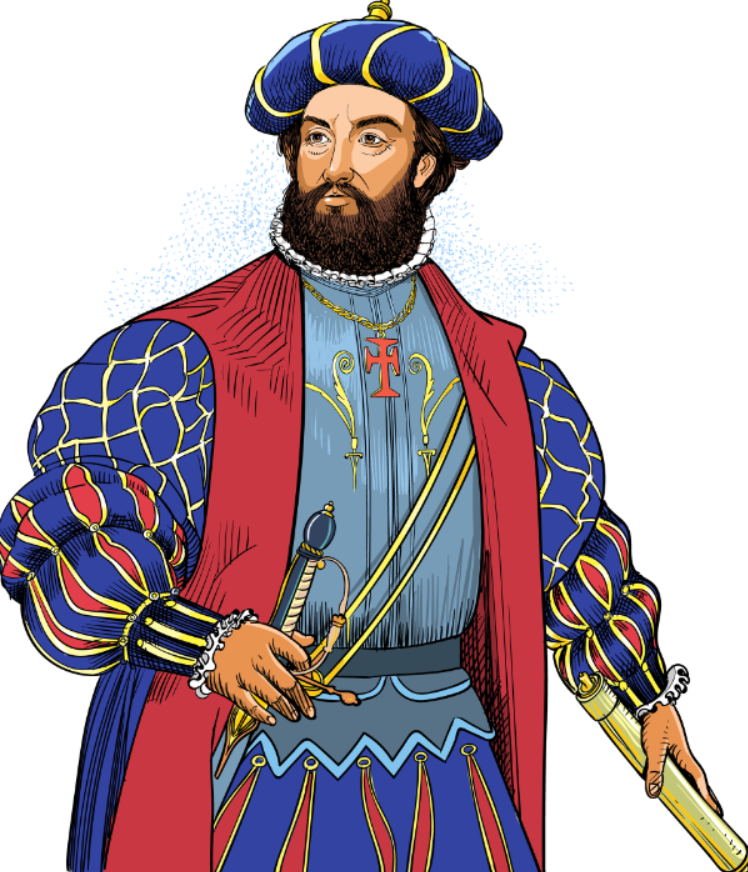- UNITS
- Unit 8 - Vasco da Gama
- The Game of Words
- Prof. Xue and Luk's Conversation
- An Active Reader
- Asking Questions
- Language Knots
- Test Corner
- LEARNING

♦ This introductory exercise aims to give you a feel for the sound and rhythm of the language, whilst presenting an overview of the maritime topic at hand. ♦ By reading and then listening to the accompanying audio, you’ll discover how words are pronounced and some simple sentence structures. ♦ Once you are comfortable with how the written and spoken words are connected, you’ll be ready to focus on keywords in the next exercise.
Vasco da Gama
The last two decades of the fifteenth century contained some of European history’s most significant sea-journeys. These journeys opened up the world to European trade, settlement, and dominance. The final great journey of this period takes us back to Portugal.
Columbus had just returned to Spain as a hero from his first voyage, but King Manuel 'the Fortunate' had just inherited the Portuguese throne. His advisors were cautious about the cost of further exploration, but Manuel decided to continue the tradition of Portuguese enterprises. His father John II had sent two spies to India over land to find more information, and Bartolomeu Dias had reached the southern tip of Africa. King Manuel was determined to join the discoveries together, and find a sea route to India from Europe.
For this task Manuel hired Vasco da Gama, a court official’s son, who had proven ability as a marine captain. After two years of preparation, Vasco da Gama’s fleet of four vessels set sail out of Lisbon in July 1497. The fleet was larger and better supplied than Columbus; da Gama had a crew of 170 men and enough supplies for three years. Some of his crew were prisoners, who could be used in the most dangerous situations, their deaths were seen as unimportant.
Vasco da Gama took a riskier route. He sailed south-west away from the African Coast, he knew that the currents near the coast would push his ships north, the wrong direction. He avoided the windless doldrums, and took the Brazil current to the Cape of Good Hope. His fleet was at sea for 93 days, almost three times longer than Columbus. He landed at Mozambique to pick up fresh food, this prevented his sailors from getting scurvy. In Kenya, da Gama hired a local pilot to guide them across the Indian Ocean. They left the African coast in April, and arrived a month later in Calicut, India.
The local leader of Calicut was unimpressed that da Gama didn’t carry gifts for him, and found the Portuguese goods worthless for trade. Vasco da Gama failed to establish trade links and sailed back towards Europe. The fleet had a very difficult journey, there was almost a mutiny. Only two vessels and 55 sailors returned back to Portugal. However, Vasco da Gama had navigated a highly valuable sea route to India.
In 1517, a Portuguese nobleman called Ferdinand Magellan completed the final piece of the puzzle. The Spanish Emperor employed Magellan to reach the Spice Islands (Moluccas, today’s Indonesia) by sailing west. Magellan sailed west across the Pacific. He died on the journey home, but his fleet was the first to sail around the world. The Great Age of Discovery was now complete, the major oceans were crossed and new continents were found.
